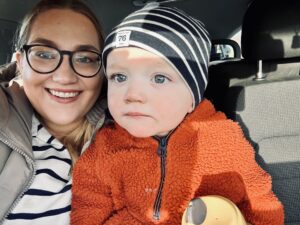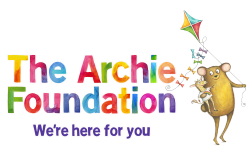Emil’s Story
March 12th is World Alloimmunisation and Hemolytic Disease of the Fetus and Newborn (HDFN) Day. HDFN is a congenital condition that presents itself in a pregnancy where the mum has developed red blood cell antibodies. Simply put, it is a condition that occurs when the blood types of a mother and her fetus are incompatible, leading to the destruction of the fetus’ red blood cells by the mother’s immune system.
Every person has a blood type, determined by specific proteins called antigens on the surface of their red blood cells. The two most important blood type systems are the ABO system (where someone can have blood type A, B, AB, or O) and the Rh system (where someone can be Rh-positive or Rh-negative). During pregnancy, if a mother and her fetus have incompatible blood types, such as if the mother is Rh-negative and the fetus is Rh-positive, the mother’s immune system might recognize the fetus’ blood cells as foreign and produce antibodies to attack them. This can lead to the destruction of the fetus’ red blood cells, causing a condition called hemolytic disease of the fetus and newborn (HDFN). HDFN can range from mild to severe, depending on factors like the degree of incompatibility and the amount of antibodies produced by the mother. In mild cases, the fetus might not show any symptoms, or they might have mild anemia. In severe cases, HDFN can lead to fetal hydrops (a buildup of fluid in the fetus), jaundice, anemia, and even death if left untreated.
Reti is a member of our Archie Neonatal Committee, and she is keen to share her story on this rare condition she has experienced.
“I found out about my antibodies after the first-trimester screening blood tests. As Emil was my third pregnancy, I had at some point beforehand been exposed to blood that had made my immune system create antibodies C, D, and G – there is a whole alphabet of antibodies, some are more likely to cause problems than others. I was closely monitored during pregnancy through regular blood tests (to check the antibody levels) and later through MCA Doppler scans, which check the fetus’ blood flow in the middle cerebral artery. Emil was doing brilliantly and showed no signs of hydrops, anemia or distress.”
Emil was born through a planned C-Section, at 36+5 weeks due to placenta praevia. “He came out making the loudest and loveliest newborn sounds, it was such a happy moment as he looked so healthy. Unfortunately, this was short-lived, as a mere few minutes after birth brought with it the stark reality of his condition: he was severely anemic and jaundiced as his tiny body struggled to cope with the lack of oxygen-carrying red blood cells.”
Emil was then wheeled away to the Neonatal Unit at Aberdeen Maternity Hospital, where he embarked on a 33-day long journey before Reti could take him home to his big brother.
“It was a time full of uncertainty and fear, as we had to watch our newborn battle against the odds. In his first hours of life, he received multiple blood transfusions and was started on maximum-level phototherapy. As his condition was not improving, he then received an exchange transfusion.”
Alongside this, he received IVIG and platelets to boost his immune system and support his clotting function. “It is important to note here that HDFN is a temporary condition and while the treatment these babies undergo can be very invasive, if done properly it should leave no lasting effects. In total Emil spent six days under phototherapy in intensive care. The first time we got to hold him was at three days old.”
But Emil’s journey was not limited to the challenges of HDFN alone. Alongside his battle with severe anemia, he was also diagnosed with congenital CMV (cytomegalovirus) and as a late preterm baby who was poorly, he had trouble maintaining his oxygen levels.
“The CMV diagnosis brought even more uncertainty as it is an awful virus that can cause a lot of problems to fragile babies. Receiving the best care possible, it was important for him to go through various tests to check how well his little body was functioning. This included hearing and eye tests, MRI, scans of his heart, and even a lumbar puncture.”
“Throughout it all, we were by his side, making a 35-mile long journey every morning to the hospital, while leaving our two-year-old toddler at home with family. Most days it felt like everything was stacked against us and it really did feel like he was going to stay in the hospital forever, but I soon learned that instead of longing for his quick discharge I needed to refocus myself and appreciate that he was in the best place and that it was important for him to be as healthy as possible by the time he did come home.”
Just under five weeks after being admitted to the neonatal unit, the family got the green light to take Emil home! “It was a bittersweet moment as by this point the neonatal unit had become a home away from home, a place where our whole family was welcomed and looked after, surrounded by care and warmth. But equally, as with any parent in this situation, we could not have been fast enough to get him in his car seat and start that one last drive home from the neonatal unit.”
Now, Emil is a lively eighteen-month-old who has mastered walking and mischief with his big brother Otto! “If you didn’t know his story then you would never guess what this little boy endured at the very start of his life. Filled with gratitude I longed to give back as best as I could.”

In 2023, Reti joined Archie’s Marathon March fundraising campaign to help raise funds for the neonatal unit. “My small effort to walk a mile a day raised just under £300, and most recently I joined the Archie Foundation’s Neonatal Committee as a volunteer to try and help other families on their neonatal journey.”
“Without personal experience, it would be easy to overlook the importance of our neonatal unit when really it is a privilege that this small corner of knowledge and care exists right here in Aberdeen, where the smallest of us are expertly looked after every day and night of the week. So on behalf of Emil and our family I would like to say thank you!”



